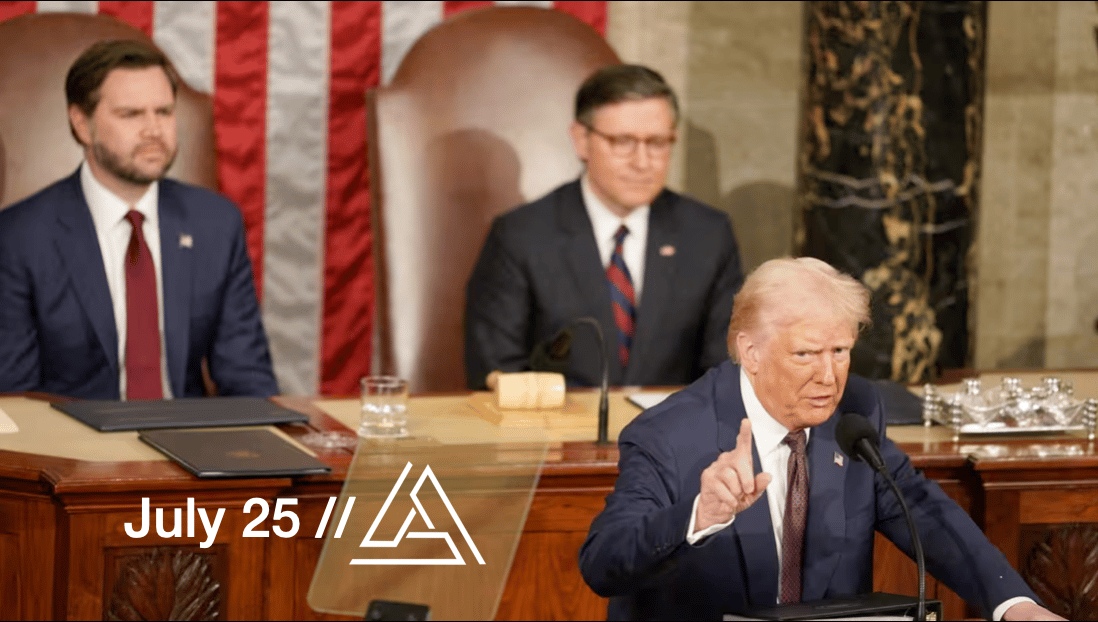- ALFA Institute
- Posts
- 🏗️WANTED: An AI Action Plan For Congress
🏗️WANTED: An AI Action Plan For Congress
The White House has set the tone. But Congress must enact durable permitting and litigation reform

The White House AI Action Plan, released earlier this week, is a crucial step toward maintaining U.S. technological and industrial leadership. But absent corresponding changes to federal law, it is simply not enough. To truly build and sustain the infrastructure to power the promise of AI, we urgently need Congress to enact an AI Action Plan as well.
AI leadership doesn’t hinge on training data or model weights alone—it relies on energy and infrastructure. The computing power behind large-scale AI systems is enormously demanding, which means more electricity, more distribution, and more data centers. We hear this warning nearly every day.
The second pillar of America’s AI Action Plan, “Build American AI Infrastructure,” outlines the work the Administration has already undertaken to streamline permitting for new projects, alongside additional policy recommendations. Much of this rests on the President’s declaration of an energy emergency on Day One—a bold but tenuous move. Projects advancing under emergency authority are virtually guaranteed to face litigation, and any future Democratic administration will almost certainly revoke that declaration overnight, bringing everything to a standstill.
This is why Congress has to step up. Durable permitting reform requires statutory change—especially litigation reform to prevent projects from being endlessly tied up in court. This is why we noted that the litigation reform that was originally part of the House’s reconciliation bill represented the most significant permitting breakthrough in decades—before the Senate parliamentarian stripped it from the One Big Beautiful Bill (OBBB).
So, how can Congress go about this moving forward?
First: There needs to be consensus that permitting reform will be THE next top priority for the 119th Congress. As the President continues to enjoy an outsized influence on Congress, this direction will need to be set by him and his administration. Following passage of the OBBB, this priority also has the added benefit of giving Congress and the White House something to coalesce around and work towards.
And it’s not just those in government that will coalesce around the President’s direction. The leaders of America’s energy and infrastructure companies expressed this same policy urgency in Pittsburgh last week. We are confident every business and industry group (including workers) would put their full support behind this effort.
Second: Take a bold swing. Our permitting process isn’t broken because of one faltering component on the line. It is broken from years of growth and piecemeal fixes that mitigate a problem in one place but complicate processes in others. If there was ever a time to scrap our broken permitting process and start fresh, it is now. Looking to something like a “permit by rule” model is the right approach.
Third: Coordinate. Every week there seems to be a hearing or markup across one of the many committees with jurisdiction over permitting. It’s an issue so broad, it’s almost impossible to keep track of it all. When we were in Congress we faced this same issue in relation to the competition with China—which led to the China Select Committee to serve as a clearinghouse for legislation.
We are well past the point of another select committee. In its absence, Congressional leadership and the National Energy Dominance Council need to serve as project managers to keep the committees together and focused on delivering the President’s vision.
Lastly: There needs to be a deadline. The July 4th deadline was a powerful tool to get the OBBB done. With roughly the same amount of time left in the year as it took the House to produce and pass their version of the reconciliation bill, Congress can get permitting done by year's end. But the President needs to lean in.
There are several mechanisms to get this done: a second reconciliation package, regular order, or attached to an end of year spending or defense bill. We have thoughts on each, which we will address in future editions.
But whatever the chosen path is, the product is what matters most. Working off the existing ledger won’t cut it.
The White House has set the tone. But unless Congress enacts durable permitting and litigation reform, the U.S. will continue to build AI infrastructure on shaky ground. An AI Action Plan for Congress isn’t optional—it’s essential.

AI REBRAND
At the AI Action Summit this week the President quipped: “I don’t even like the name— you know, I don’t like anything that’s artificial. So could we straighten that out please? We should change the name. I actually mean that, I don’t like the name— artificial anything. Because it’s not artificial, its genius. It’s pure genius”.
The casual observer probably thinks this is a throwaway line—one of the president’s frequent “off script” commentary. But savvy insiders know he’s serious.
So, we want to put it out to our subscribers. Whatdaya got? Give us your best rebrand for AI and we’ll share them here next week.
As always, if you are a technology company or policy advisor working on something that pulls society forward, drop us a line at [email protected] or subscribe here.
Thanks For Reading and Have a Great Day
🇺🇸🇺🇸🇺🇸
